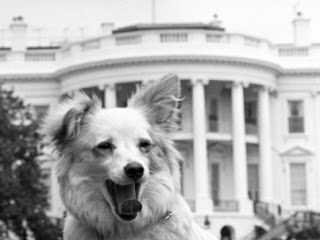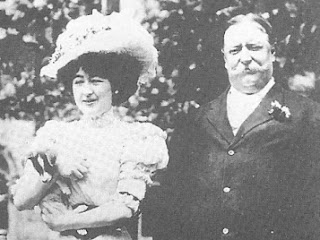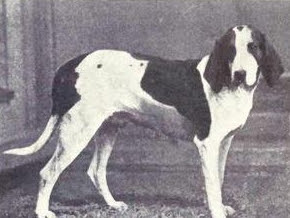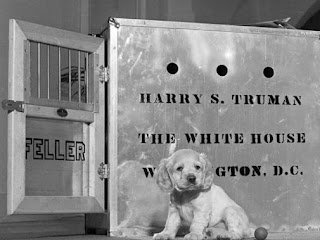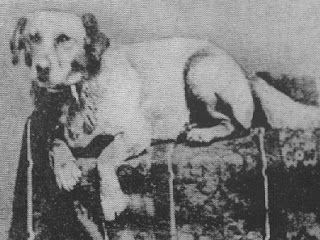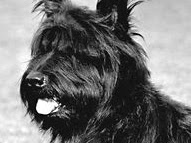Nearly every US President had a pet in the White House, with the most popular being dogs. Below is a list of America's First Dogs.
 |
| JFK's dog Pushinka on the south lawn of the White House. |
George Washington didn't live in the White House (it was under construction) but he did own 17 hound dogs during his two terms of presidency (1789-1797). He had 12 hounds named Captain, Forester, Taster, Cloe, Lady Rover, Searcher, Drunkard, Tipsy, Tipler, Mopsey, Vulcan and Sweet Lips, and five French hounds that were given to him by the Marquis de Lafayette to breed with his dogs so he could create a superior hunting dog - the American foxhound.
John Adams (1797-1801), the 2nd president, had two (possibly more) mixed-breed dogs named Juno and Satan. They were the first dogs to live at the White House.
It was several years later when the next dog came to the White House with James Monroe (1817-1825), the 5th president. It was a small black spaniel, believed to be named Buddy. It is also believed that he may have had a Siberian husky named Sebastian.
The next dogs to come to the White House was when John Tyler (1841-1845) became the 10th president. They were two wolfhounds, imported from Ireland, and an Italian greyhound named Le Beau, ordered from the consul of Naples. All were gifts to his wife.
Seven dogs came to the White House when Franklin Pierce (1853-1857) took office as the 14th president. They were small sized dogs, possibly Japanese Chins, and were given to the President by Commodore Matthew Perry after a successful signing of a treaty with Japan. Pierce kept one of the dogs, gave one to Jefferson Davis, Secretary of War (who would be seen carrying the little dog around in his pocket), and the rest to friends.
The next President to take office, James Buchanan (1857-1861) was gifted two dogs. One was a Newfoundland named Lara and the other a toy terrier named Punch.
Abraham Lincoln (1861-1865), the 16th president, had two dogs. One was his beloved dog Fido, who couldn't handle the stress of living in the White House so he was sent back to Springfield (Lincoln's hometown) to stay with a friend. The other, a small dog named Jip, joined the family after they moved into the White House.
The next dogs to come to the White House was with Ulysses Grant (1869-1877), the 18th president. One was a Newfoundland named Faithful that belonged to Grant's youngest son. The other was a black and tan dog named Rosie.
Rutherford Hayes (1877-1881), the 19th president, had many dogs while living in the White House. There was a Newfoundland named Hector, an English mastiff named Duke, two hunting dogs named Juno and Shep, a greyhound named Grim, a cocker spaniel named Dot, a miniature schnauzer named Otis, and possibly a small mixed-breed dog named Jet.
Following Hayes's presidency, another Newfoundland moved into the White House with James Garfield (1881). His name was Veto and twice, while there, he was a hero. On one occasion he held the reins of a horse on a rampage in the barn until someone arrived, and on the other occasion he alerted staff when the barn caught fire.
Grover Cleveland (1885-1889 & 1893-1897), the 22nd and 24th president, had many dogs while in office. There was a cocker spaniel, believed to be named Gallagher, a prize-winning St. Bernard named Kay, a French poodle named Hector, a collie, and several dachshunds and foxhounds.
Benjamin Harrison (1889-1893), who served as president between Cleveland's two terms, had several mixed-breed dogs, including a part collie named Dash.
Theodore Roosevelt (1901-1909), the 26th president, not only had a lot of dogs, he had a lot of pets! His dogs included Pete, a bull terrier, Rollo, a St. Bernard, Sailor Boy, a Chesapeake Bay retriever, Skip, a mixed-breed dog, Blackjack (Jack), a Manchester terrier, and Manchu, a Pekingese.
Dogs continued to live at the White House until 2017.
During William Taft's term (1909-1913), a small white dog given the name Caruso, was gifted to his daughter by famed opera singer Enrico Caruso.
Woodrow Wilson (1913-1921) had an Airedale named Davie, and just before the end of his second term, he was given a white bull terrier named Whitestock Service Man (aka Bruce) by a breeder who admired Wilson greatly.
Warren Harding (1921-1923) had an Airedale named Laddie Boy - the first dog in the White House to receive a lot of media attention. He also had a lesser-known bulldog named Old Boy (Ol' Boy or Oh Boy).
Calvin Coolidge (1923-1929) was another president who had a lot of pets, including many dogs. There were two white collies named Rob Roy and Prudence Prim, an Airedale named Paul Pry (the half-brother of President Harding's Laddie Boy), a fox terrier named Peter Pan, a Shetland sheepdog named Calamity Jane, two chows named Tiny Tim and Blackberry, a brown collie named Ruby Rouch, a "yellow" collie named Bessie, a bulldog named Boston Beans, a Belgian shepherd named King Cole and an English setter bird dog named Palo Alto.
Although Herbert Hoover (1929-1933) did not own a big variety of pets like Coolidge, he did own a lot of dogs. One was a Belgian shepherd named King Tut, who was said to have passed away due to stress while living at the White House - earning him the distinction as the presidential dog who "worried himself to death." Other dogs included Pat, a German shepherd (a gift from Captain Charles Mabbutt, intended to replace King Tut), Big Ben and Sonny, both fox terriers, Yukon, a Siberian husky, Patrick, an Irish wolfhound, Gillette, a Gordon setter (and prize-winning dog at the prestigious Madison Square Garden show), Weejie, a Norwegian elkhound, and possibly Glen, a Scottish collie.
Franklin Roosevelt (1933-1945) had several dogs, including Fala, a Scottish terrier who charmed the public and was mentioned in FDR's famous Fala Speech. Other dogs included Major, a German shepherd, Meggie, a Scottish terrier, Winks, a Llewellyn setter, Tiny, an Old English sheepdog, President, a Great Dane, and Blaze, an English bullmastiff.
Shortly after Harry Truman (1945-1953) was sworn in, his 21 year old daughter was given an Irish setter puppy, which she named Mike, by Postmaster General Robert Hannegan. Mike had a short stay at the White House. Later, Truman was gifted a cocker spaniel puppy named Feller - who he refused to keep, causing a public outcry.
Dwight Eisenhower (1953-1961) was given a Weimaraner (named Heidi) by the son of the Postmaster General. He loved her very much but had to send her to his farm in Pennsylvania after a costly mishap in the White House.
The two most well-known dogs that shared the White House with John Kennedy (1961-1963) were Charlie, a Welsh terrier, and Pushinka, a mixed-breed puppy of Strelka (Soviet space dog) that was given to the President by the Soviet Leader Nikita Khrushchev. The two dogs had a litter of four puppies named Butterfly, White Tips, Blackie and Streaker (two of the puppies were given to children who won a contest and two were given to family friends.) Other dogs included Gaullie, a French poodle, Shannon, a cocker spaniel, Wolf, an Irish wolfhound, and Clipper, a German shepherd.
Lyndon Johnson (1963-1969) had four beagles named Him, Her, Edgar and Freckles, a white collie named Blanco, and a rescued dog named Yuki.
Richard Nixon (1969-1974) had three dogs while President. The White House dogs included Vicky, a French poodle, Pasha, a Yorkshire terrier, and King Timahoe, an Irish setter.
Gerald Ford (1974-1977) had a beloved golden retriever named Liberty and one of her puppies (out of a litter of nine) named Misty.
Jimmy Carter's nine year old daughter Amy was given a border collie mix (born on the day Carter won the presidential election) named Grits. A couple of years later, the dog was returned to the teacher after her dog (Grit's mother) died. The family also had an Afghan hound named Lewis Brown while living in the White House.
Ronald Reagan (1981-1989) came to the White House without any dogs, but a few years later the March of Dimes poster child gave the First Lady a Bouvier des Flandres puppy which she named Lucky. When Lucky became "the size of a pony" and too much to handle at the White House, she was sent to live more freely at Reagan's California ranch. Soon after, they were given a Cavalier King Charles spaniel puppy as a Christmas gift. They named their new puppy Rex.
George H.W. Bush and First Lady Barbara came to the White House with their beloved Millie, an English springer spaniel who "wrote" Millie's Book: As Dictated to Barbara Bush - describing her life in the White House. Millie had a litter of puppies, and one remained with the Bushes at the White House. His name was Ranger.
A few years after coming to the White House, Bill Clinton (1993-2001) got a chocolate Labrador retriever puppy named Buddy - because, according to Clinton's spokesman, "It's the President's desire to have one loyal friend in Washington."
George W. Bush (2001-2009) had two Scottish terriers named Miss Beazley and Barney, and an English springer spaniel named Spot (an offspring of his father's dog Millie.)
Barack Obama (2009-2017) had two Portuguese water dogs. When Obama won the election, Senator Ted Kennedy gifted Bo to his two daughters. In 2013, Sunny joined the family. According to a White House blog post, she was "the perfect little sister for Bo."
Donald Trump is the first president in over 100 years to not own a dog (or any other pet). In 2016, a long-time friend of his wanted to give him a goldendoodle puppy named Patton, which she thought would be nice for his 10 year old son Barron, but Trump refused - saying he was too busy for a dog.
Soon, pets will once again grace the halls of the White House when Joe Biden takes office in 2021. He plans to bring his two German shepherds, Major (a rescued dog) and Champ, and a cat which he plans to adopt from a shelter."


